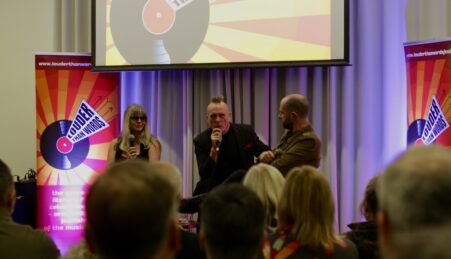By Shawna Healey
What is “Fast Fashion”?
Fast fashion is a contemporary term used by fashion retailers to express that designs move from catwalk to high street quickly to capture current fashion trends. Fast fashion clothing collections are based on the most recent fashion trends presented at Fashion Week in both the spring and the autumn of every year.
Clothing is a major part of people’s lives, whether we actively participate in being “fashionable” or just wear clothes because we have to. Fast fashion has never been bigger, with Zara releasing 12,000 new garments annually at reasonable prices, Topshop gives us 7,000 new pieces each year, and online fashion websites releasing new collections and garments seemingly every day. This rate of production and the low cost of the clothing being produced is harming our planet, and some people have gone so far to stay that fast fashion is killing our planet slowly. To keep costs low, vibrant colours, prints and fabric finishes are often made with toxic chemicals. This process had led to textile dying to be the second largest polluter of clean water globally, after agriculture. Greenpeace has recently campaigned for fashion brands to remove toxic chemicals from their supply chains. Microfibers from polyester are also a problem in fast fashion – when polyester breaks down in the wash and then enters the water system, tiny fragments of fibres are consumed by fish and other aquatic animals, and can subsequently kill them and/or enter human food supplies.
There are also impacts on humanity directly resulting from fast fashion. The workers who produce the fast clothing that we enjoy are often from less economically developed countries, who have minuscule wages and incredibly long work days. These effects can have dire consequences.
Fashion brands keep prices low due to exploitative overseas garment factories. In Bangladesh, for example, most garment workers earn a little more than 3,000 taka (approximately £25) per month, far below what is considered a living wage, calculated at 5,000 taka a month, or approximately £45. The living wage is based on how much money is required to provide a family with food, shelter and education. The conditions of the factory workers are also poor – they are often forced to work 14-16 hours a day, seven days a week.
Since 1990, more than 400 workers have died in sweatshops in Bangladesh, while several thousand have been wounded in 50 major factory fires. Sexual harassment and discrimination are widespread, and maternity leave is often not upheld by employers.
There is a new movement in fashion that aims to reduce the harmfulness of the fashion industry to both our planet and to its vulnerable people, called eco fashion.
What is “Eco Fashion”?
Sustainable fashion, also called eco fashion, is a part of the growing design philosophy and trend of sustainability, the goal of which is to create a system which can be supported indefinitely in terms of human impact on the environment and social responsibility. Eco fashion incorporates clothing and other goods produced by methods that are not harmful to the environment, e.g. using materials that have been recycled or that have been grown without the use of pesticides.
Buying fewer, higher quality clothing and repairing garments when they are broken instead of buying new is one way of being sustainable, along with buying pre-worn, used or clothes from charity shops and sites such as eBay. Creating a “capsule” wardrobe which includes around 30 timeless and effortless pieces, including shoes and accessories, also ensures that you will only own and wear pieces that you enjoy, as well as not wasting money on “trendy” pieces that will only be worn a few times before the next trend comes, and then will be discarded.
When discarding clothes, you should also think about where they go too. If they still have life in them, they can be taken to charity shops or clothes recycling bins. In fact, it may be worth enquiring at charity shops even if the clothes in question are past their best – some charities do not accept used bras, for example, but they will send them on to people in need in other parts of the globe, and can sell on the fabric from unsalvageable clothes as scraps. Reusing fabrics independently may also be an option if you have a creative flair and some sewing skills.
There are also eco, ethical fashion brands that offer both affordable and higher end clothing. Stella McCartney is the undisputed queen of vegan clothing, using materials such faux leather for her clothing and accessories, and having recently released a pair of glueless shoes.
For people on a budget, however, there are also more affordable brands that offer sustainable clothing. Madia & Mathilda, for example, is a brand that focuses of four sustainability pillars: overconsumption, waste, friendly fibres, and the future of fashion. To ensure this philosophy is adhered to, they produce their clothing locally in the UK. Any leftover fabric is used for trims and the following season’s samples, or re-used for new designs.
Thought, formally known as Braintree Clothing, also produces GOTS-certified organic clothing, using hemp, Tencel and recycled PET, and azo-free dye. The company also produces their clothing in one place to reduce their carbon footprint. They specialise in floral dresses and flowy, eye-catching staple pieces.
When shopping for eco fashion, you must be careful of “greenwashing”, where companies, most famously H&M, release an eco-fashion line in an attempt to improve their PR and not through genuine altruistic philanthropism. H&M recently released its ‘Conscious line’, using recycled materials, and has also created a recycling programme. However, this has been met with criticism, notably from The Guardian’s Lucy Siegle, who estimates that it will take H&M up to 12 years to re-use or recycle 1,000 tons of clothing waste. Meanwhile, H&M produces that same volume of clothing within days.





Leave a reply